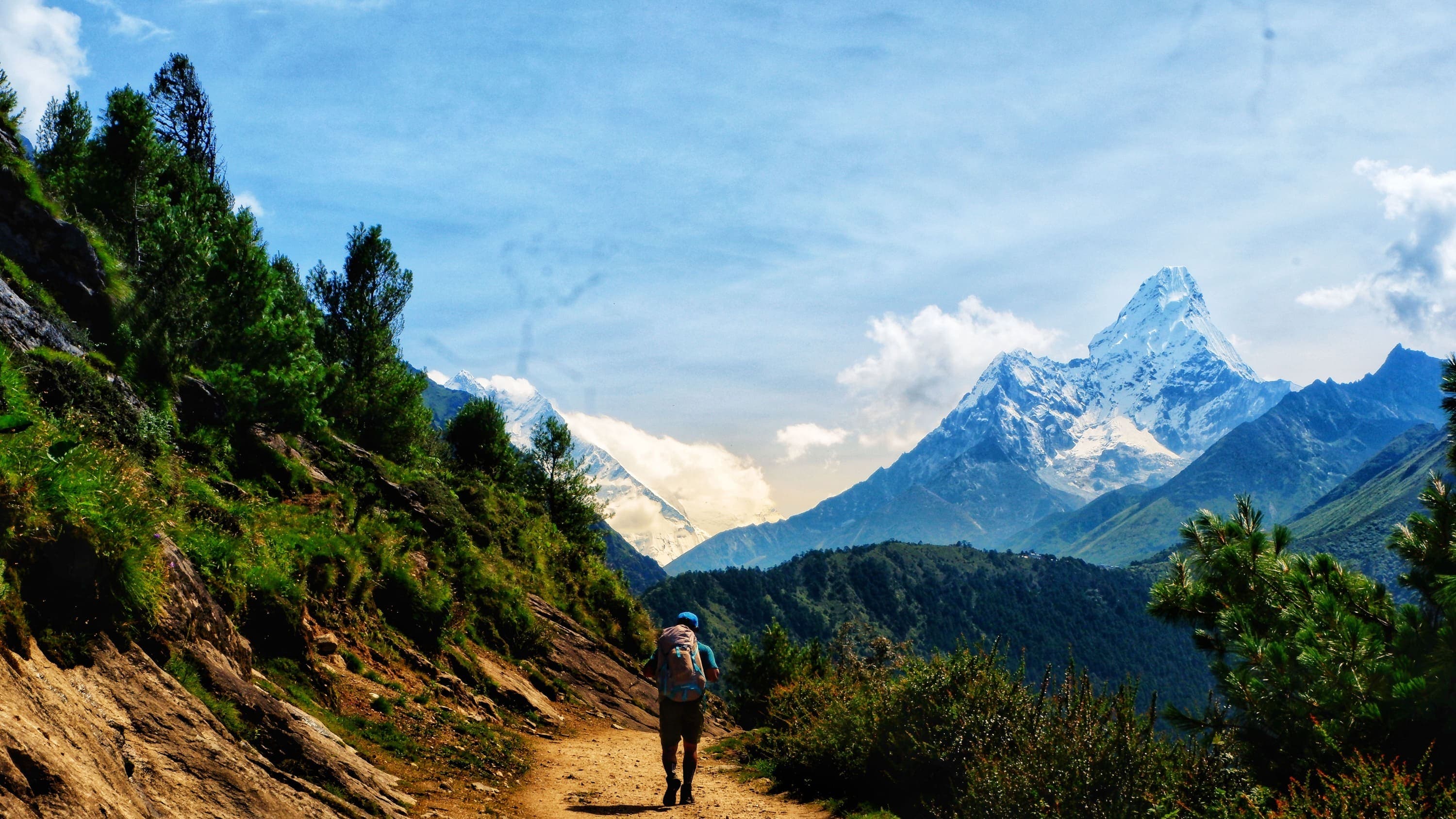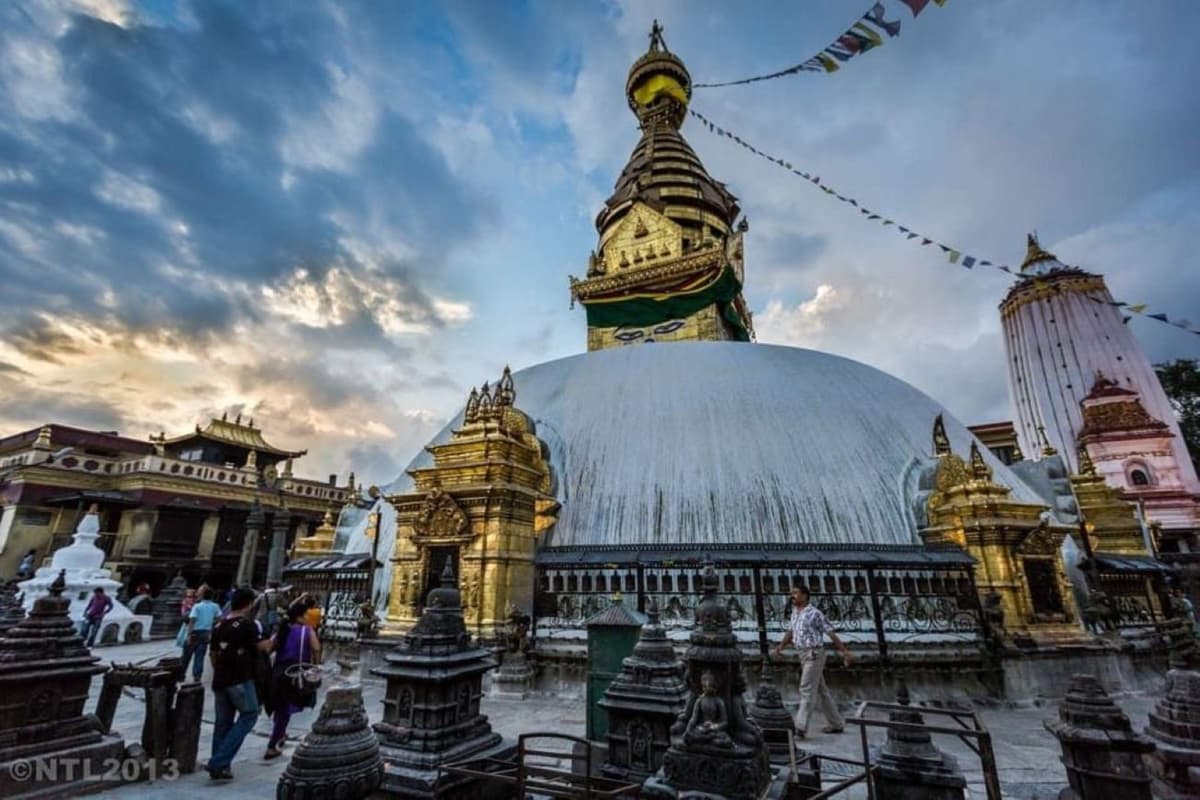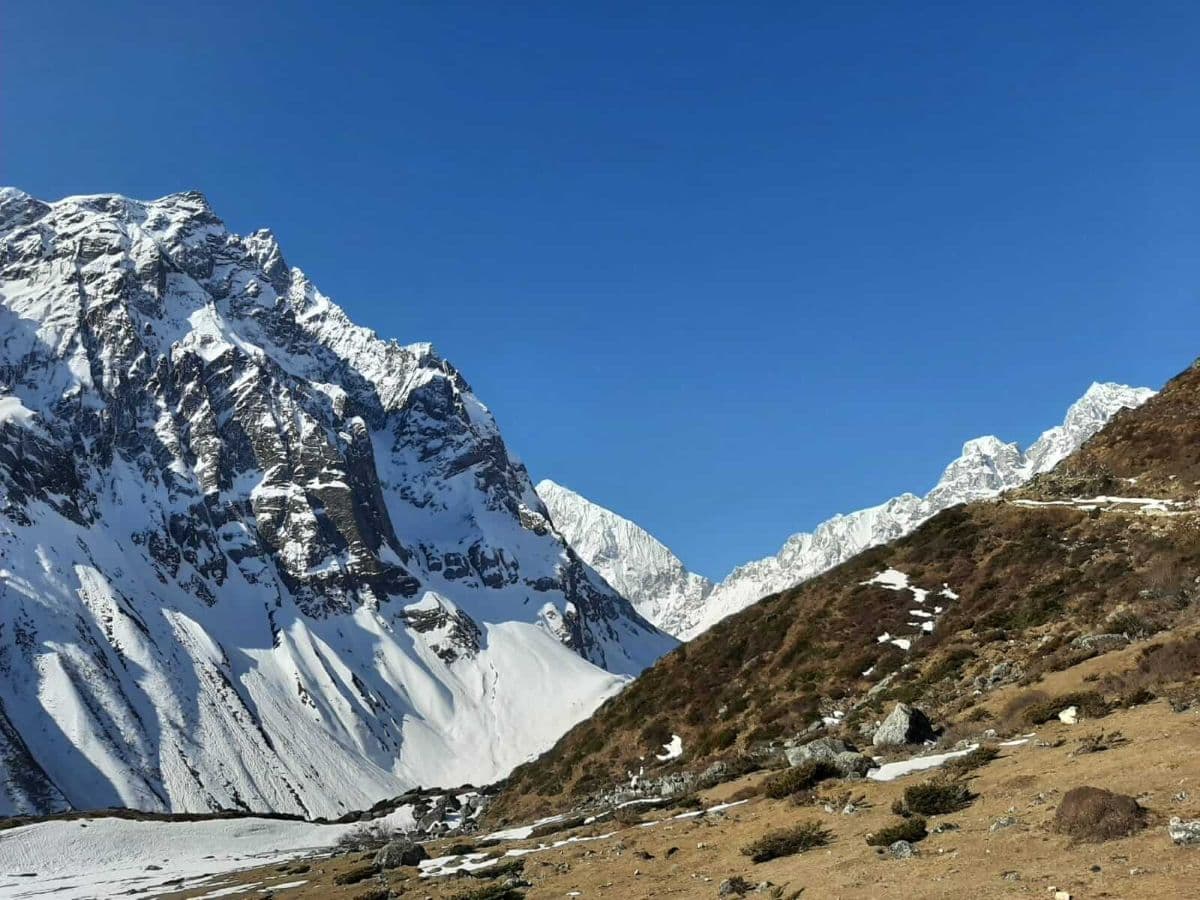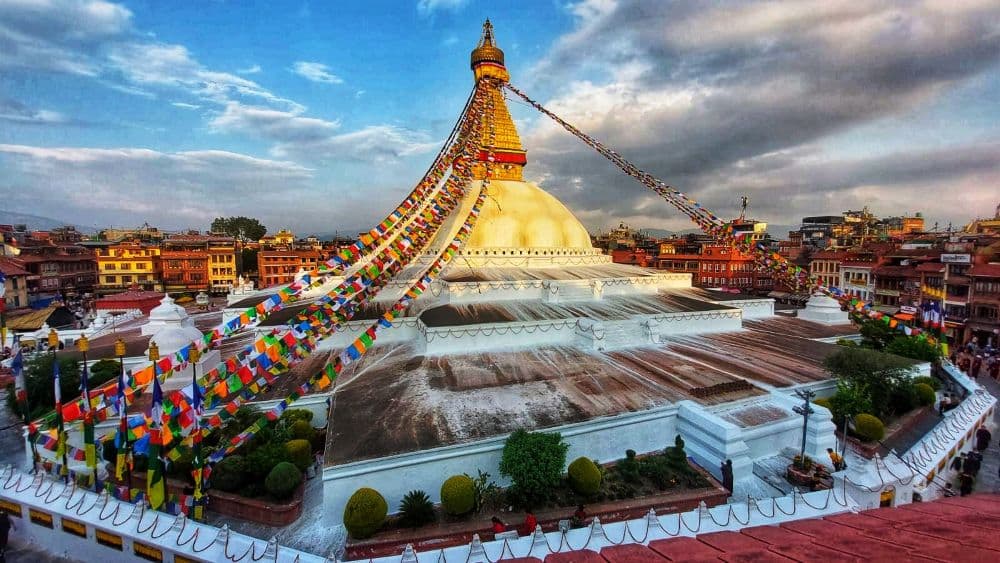
Guide to Trekking Permits in Nepal 2025
Trekking permits in Nepal are an essential part of planning your adventure in the majestic Himalayas. Nepal is one of the world’s top trekking destinations, offering breathtaking views, rich culture, and a variety of trails for every adventurer. But before you hit the trails, it’s crucial to understand the trekking permits and fees in Nepal 2025. These permits are not just formalities—they help protect the natural environment, support local communities, and ensure your safety along the journey.
Whether you're heading to Everest Base Camp, Annapurna Circuit, or the offbeat Manaslu region, permits are required for most trails. This comprehensive guide explains everything you need to know about Nepal trekking permits in 2025, including costs, rules, and how to obtain them.
What are Trekking Permits?
Trekking Permits are the official documents issued by the Nepal Tourism Board (NTB) or, Department of Immigration (for restricted areas) or, TAAN (Trekking Agencies’ Association of Nepal) or, Department of National Parks and Wildlife Conservation (DNPWC) to allow trekkers to enter the areas of Nepal legally as trekkers.
Why Do You Need Trekking Permits in Nepal?
If you do not obtain trekking permits in Nepal, you can get denied at the checkpoints, or you will need to pay hefty fines, or you will have to pay twice the amount to obtain the permits. Moreover, these permits are not just documents for entry into a certain region; there are other purposes like
- Preserve natural beauty and wildlife
- Support local communities through tourism fees
- Enhance your safety on the trail
- Ensure responsible and regulated tourism
Nepal Trekking Permit Fees 2025 Updated
Nepal Trekking Permit Fees vary based on the trekking region, nationality, and the type of trek. Here's a breakdown of the essential permits and their associated costs for 2025:
1. TIMS Card
The Trekkers' Information Management System (TIMS) card is an essential trekking permit that ensures trekkers' safety and security. With the joint effort of the Nepal Tourism Board (NTB) and the Trekking Agencies' Association of Nepal (TAAN), the TIMS card was introduced. Usually, trekkers will be asked to provide personal information like passport number, nationality, contact number, address, and itinerary. This information will be helpful in case of accidents and natural calamities, and ensure safe trekking in Nepal.
The cost of a TIMS card is
| Trekkers | Price |
| SAARC nationals | NPR 1,000 per person( around $10) |
| National other than SAARC nations | NPR 2000 per person(around $20) |
How to Obtain a TIMS card?
You can get the TIMS card with the help of any government-registered companies and members of the Trekking Agencies Association of Nepal (TAAN). Previously, a TIMS card was issued to free individual trekkers; however, with the new update, you should be accompanied by licensed trekking guides and carry a trekking agency-issued TIMS card. If you are trekking to any restricted areas of Nepal, then you do not need to obtain a TIMS card.
Documents necessary for the TIMS Card
- Copy of Passport
- Itinerary
- Two Passport-size photographs
- Emergency contact details
- Copy of a valid Visa sufficient to cover the trekking day

2. National Park and Conservation Area Entry Permit
Most of the trekking routes in Nepal take you inside the national parks and conservation areas. So, you will need a permit to enter these national parks, conservation areas, or hunting areas. However, these permits are non-transferable, non-refundable, and valid for single entry only. So you should be careful regarding trekking dates and itinerary while obtaining these permits.
Keep a printed copy of your permit and receipt in a waterproof pouch during your trek.
| SN. | National Parks/ Wildlife Reserve/ Conservation Areas | Nepali | SAARC | Foreigners |
| 1 | Chitwan National Park | NRs. 150 per person per entry | NRs. 1,000 per person per entry | NRs. 2,000 per person per entry |
| 2 | Sagarmatha National Park | NRs. 100 per person per entry | NRs. 1,500 per person per entry | NRs. 3,000 per person per entry |
| 3 | Banke National Park | NRs. 100 per person per entry | NRs. 750 per person per entry | NRs. 1,500 per person per entry |
| 4 | Bardia National Park | NRs. 100 per person per entry | NRs. 750 per person per entry | NRs. 1,500 per person per entry |
| 5 | Khaptad National Park | NRs. 100 per person per entry | NRs. 500 per person per entry | NRs. 1,500 per person per entry |
| 6 | Langtang National Park | NRs. 100 per person per entry | NRs. 1,500 per person per entry | NRs. 3,000 per person per entry |
| 7 | Makalu-Barun National Park | NRs. 100 per person per entry | NRs. 1,500 per person per entry | NRs. 3,000 per person per entry |
| 8 | Parsa National Park | NRs. 100 per person per entry | NRs. 750 per person per entry | NRs. 1,500 per person per entry |
| 9 | Rara National Park | NRs. 100 per person per entry | NRs. 1,500 per person per entry | NRs. 3,000 per person per entry |
| 10 | Shey-Phoksundo National Park | NRs. 100 per person per entry | NRs. 1,500 per person per entry | NRs. 3,000 per person per entry |
| 11 | Shivapuri- Nagarjun National Park | NRs. 100 per person per entry | NRs. 600 per person per entry | NRs. 1,000 per person per entry |
| 12 | Shuklaphanta National Park | NRs. 100 per person per entry | NRs. 750 per person per entry | NRs. 1,500 per person per entry |
| Wildlife Reserve | ||||
| 13 | Koshi Tappu Wildlife Reserve | NRs. 100 per person per entry | NRs. 750 per person per entry | NRs. 1,500 per person per entry |
| Conservation Areas | ||||
| 14 | Api Nampa Conservation Area | NRs. 100 per person per entry | NRs. 500 per person per entry | NRs. 2,000 per person per entry |
| 15 | Annapurna Conservation Area | NRs. 100 per person per entry | NRs. 1,000 per person per entry | NRs. 3,000 per person per entry |
| 16 | Blackbuck Conservation Area | NRs. 100 per person per entry | NRs. 500 per person per entry | NRs. 2,000 per person per entry |
| 17 | Gaurishanker Conservation Area | NRs. 100 per person per entry | NRs. 1,000 per person per entry | NRs. 3,000 per person per entry |
| 18 | Kanchenjunga Conservation Area | NRs. 100 per person per entry | NRs. 500 per person per entry | NRs. 2,000 per person per entry |
| 19 | Manaslu Conservation Area | NRs. 100 per person per entry | NRs. 1,000 per person per entry | NRs. 3,000 per person per entry |
| Hunting Reserve | ||||
| 20 | Dhorpatan | NRs. 100 per person per entry | NRs. 1,500 per person per entry | NRs. 3,000 per person per entry |
If these permits have to be issued at the checkposts, then you will have to pay double the original amount of the trekking permits.
Where to Obtain National Park Permits?
You can obtain the national park or conservation area permits at the Tourist Service Center in Kathmandu, the National Tourism Board in Pokhara, or the entrance gates.
Documents Required
- Copy of Passport
- Itinerary
- Two Passport-size photographs
- Emergency contact details
- Copy of a valid Visa sufficient to cover the trekking day.
3. Restricted Area Permit
Another permit that you will need to obtain for trekking in Nepal is the Restricted Area Permit(RAP). Usually, you will need this permit to enter some of the restricted areas in Nepal. Now, you may be curious about what restricted areas are in Nepal.
Usually, restricted areas are the zones or certain areas that are highly regulated by the Government of Nepal. These areas have limited accessibility for various reasons like safety, environment and cultural conservation, political sensitivity, etc. These areas are allowed for only group trekkers. Individual trekkers are strictly permitted in these areas.
The permit fee for restricted areas in Nepal is given below:
| S.N | Restricted Area | Permit Fee |
Upper Mustang
| For the First 10 Days=USD 500 per person Beyond 10 Days=USD 50 per person /day
| |
| 2. | Upper Dolpa
| For the First 10 Days=USD 500 per person Beyond 10 Days=USD 50 per person /day |
| 3. | Gorkha Manaslu Area
| September – November USD 100 per person/week Beyond 1 week=USD 15 per person/day
December – August USD 75 per person/week Beyond 1 week=USD 10 per person/day
|
| 4. | Humla
| USD 50 per person/week Beyond 1 week=USD 10 per person/day |
| 5. | Taplejung
| For the first 4 weeks=USD 20 per person/ week Beyond 4 weeks=USD 25 per person /week
|
| 6. | Lower Dolpa Area
| USD 20 per person/ week Beyond 1 week=USD 5 per person /day |
| 7. | Dolakha
| USD 20 per person/ week |
| 8. | Gorkha Tsum Area Valley
| September – November USD 40 per person/week Beyond 1 week=USD 7 per person/day
December – August USD 30 per person/week Beyond 1 week=USD 7 per person/day |
| 9. | Sankhuwasabha
| For the first 4 weeks=USD 20 per person/ week
Beyond 4 weeks=USD 25 per person /week |
| 10. | Solukhumbu
| For the first 4 weeks=USD 20 per person/ week
Beyond 4 weeks=USD 25 per person /week |
| 11. | Rasuwa
| USD 20 per person /week |
| 12. | Manang | September – November USD 100 per person/week Beyond 1 week=USD 15 per person/day
December – August USD 75 per person/week Beyond 1 week=USD 15 per person/day
|
| 13. | Bajhang | USD 90 per person/week
Beyond 1 week=USD 15 per person/day |
14. | Mugu | USD 100 per person/week
Beyond 1 week=USD 15 per person/day |
15. | Darchula | USD 90 per person/week
Beyond 1 week=USD 15 per person/day |
How to obtain a Restricted Area Permit?
You need to apply for the restricted area permit through a reputable trekking agency. You can provide the necessary details to the trekking agency, and they will get you a permit from the Department of Immigration.
Documents Necessary for RAP
- Online application form
- Copy of Passport
- Copy of a valid Visa sufficient to cover the trekking day
- Voucher for Bank payment (fees) for permits
- Two Passport-size photographs
Rural Municipality Permits
The local level government also issues permits to enter certain areas of the region. While trekking to Everest Base Camp, you need to acquire a Khumbu Pasang Lhamu Rural Municipality permit, which will cost you NRP 2000(around $20). You can get this permit either at Lukla or Monjo.
Popular Trekking Region-Wise Permit Requirements
Everest Base Camp (EBC) Trek Permits
To trek to Everest Base Camp in 2025, you'll need:
1. Sagarmatha National Park Entry Permit: $30
2. Khumbu Pasang Lhamu Rural Municipality Permit: $20–$30
Total cost: Around $50 USD
Note: You no longer need a TIMS card for the Everest region. These two permits cover all requirements.
However, if you are embarking on your EBC trek from Jiri, you will need one more permit, i.e., Gaurishankar Conservation Area, which will cost you NRP 3000 per person(around $30)
Why it matters: These permits support the upkeep of trails, waste management, and local economy development in the Khumbu region.
Annapurna Region Treks (Annapurna Base Camp, Circuit, etc.)
Permits required:
1. ACAP Permit: $30
2. TIMS Card: $10–$20
Total cost: Around $40–$60 USD
Annapurna treks are among Nepal's most popular, with stunning views, diverse culture, and easy access from Pokhara.
If you are trekking to a restricted area like Nar Phu Valley in combination with the Annapurna region trek, you will have to get RAP. The cost for RAP will be
September – November
USD 100 per person/week
Beyond 1 week=USD 15 per person/day
December – August
USD 75 per person/week
Beyond 1 week=USD 15 per person/day

Manaslu Circuit Trek
You will have to enter a restricted area in this trek, so trekking here comes with stricter rules and higher permit fees:
Permit for Manaslu Restricted Area Trek:
- RAP:
Sep- Nov: USD 100 per person for the first seven days
Beyond 7 Days: USD 15 per person per day
Dec-Aug: USD 75 for the first 7 days
Beyond 7 Days: USD 10 per person per day - MCAP Permit: $30
- ACAP Permit: $30
TIMS Card: Usually not required for this restricted area
Guide required: YES (solo treks are not allowed)
Group requirement: Minimum of two trekkers (through a licensed agency)
Despite the cost, many trekkers say Manaslu is peaceful, culturally rich, and worth every penny.

General Trekking Rules to Follow in Nepal
Getting a permit is just one part of trekking responsibly. Follow these basic guidelines to help preserve Nepal’s natural and cultural treasures:
- Stay on marked trails
- Don’t litter—carry your trash
- Respect local traditions and dress modestly
- Don’t disturb wildlife or pick plants
- Follow your guide's advice at all times
- Don’t trek solo in restricted areas
Trekking in Nepal is more than a hike—it's a journey through some of the world's most spectacular landscapes. And while trekking permits may seem like a small detail, they play a big role in protecting Nepal’s natural beauty, supporting local communities, and keeping you safe.
Now that you know about trekking permits in Nepal for 2025, it’s time to start planning your adventure. Whether you dream of Everest, Annapurna, or Manaslu Circuit Trek, we're here to make it happen.
Ready to trek? Book with Mountain Adventure Nepal now.





